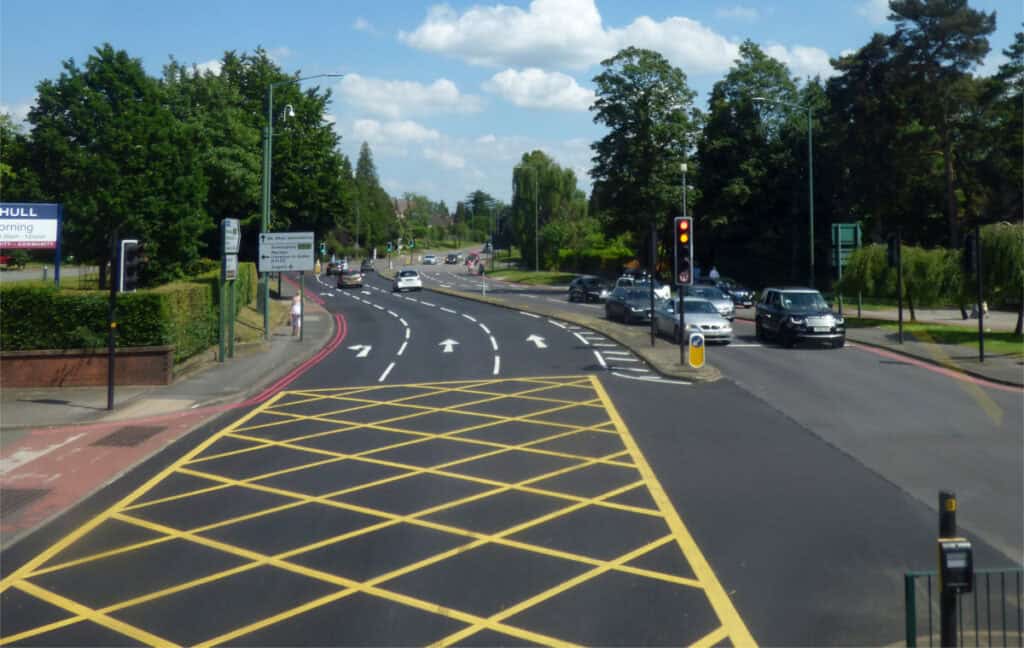
Drivers Raise Concerns Over Yellow Box Junctions
Drivers have raised concerns over many yellow box junctions, with many believing them to be either oversized or poorly designed.
Yellow box junctions are designed to stop drivers from idling at crossroads where they could invertedly cause traffic jams by sitting in the middle of the crossroad.
While many junctions have designated boxes to queue when turning right, some don’t allow for it due to the design of traffic flow.
And the issue can become more severe in heavy traffic if vehicles traveling straight on sit in the middle of the crossroads, leaving other road users unable to pass them even in a green light.
But concerns have been raised that many junctions that have yellow boxes have been poorly designed or the boxes themselves are oversized, adding to traffic issues.
What Is The Issue With Yellow Box Junctions?
Junctions can often be precarious for drivers, particularly in heavy traffic.
Many local authorities carefully review road safety and traffic flow issues around junctions and roundabouts to decide whether it’s the right option.
It’s not unheard of for junctions to be replaced by light-controlled roundabouts or for roundabouts to be replaced with yellow box junctions.
However, a recent study found that 98% of yellow boxes in London and Cardiff (where the study took place) were larger than required to prevent traffic congestion.
There are reasons for making them larger than needed, though. Safety is a big reason for that as larger yellow boxes can deter drivers from getting themselves into potentially dangerous situations by waiting in areas that might block traffic or cause safety issues.
But with 374,276 fines issued in Cardiff and London for sitting in yellow boxes, it’s a question worth asking – should yellow box junctions be looked at again?
And should punishments be more lenient?
Part of the issue is that 53% of the yellow box junctions analysed in the study were not under traffic light controls, which means there isn’t necessarily a need for them to be yellow box junctions rather than a junction with ‘keep clear’ markings.
If they were ’keep clear’ markings rather than yellow boxes, there would be no risk of drivers receiving a Penalty Charge Notice (PCN).
Do Yellow Box Junctions Pose A Safety Risk?
Yellow box junctions play a crucial role in ensuring drivers are safe on the road, especially at busy junctions where main roads intersect.
The issue is more around how far they extend and whether it’s necessary for them to be as large as they are given that drivers aren’t blocking oncoming traffic in many cases where fines are issued.
The Highway Code states that drivers can only enter boxes if they see their exit is clear – which means you should not be sitting in a queue in a box waiting to turn.
But if a yellow box is too large, it can be difficult to see where it ends or view oncoming traffic to determine if it’s safe to approach the yellow box and turn.
What do you think of yellow box junctions? Are they the safest form of junction or do local authorities need to look at the way fines are issued given the poor design and size of many yellow boxes? Let us know in the comments below.

